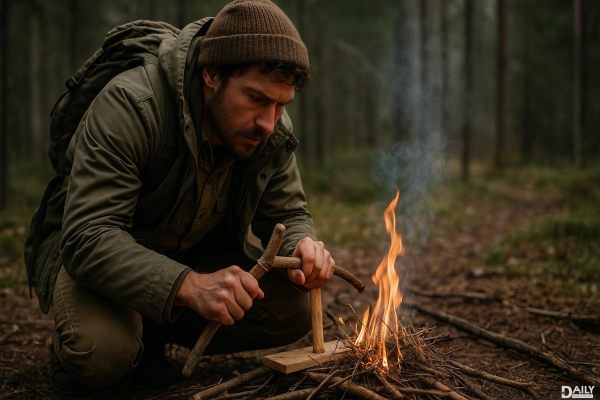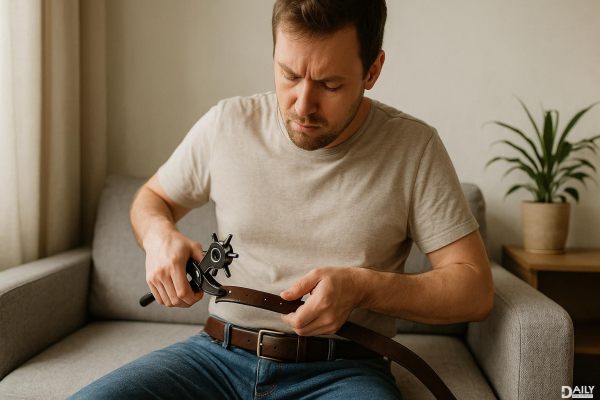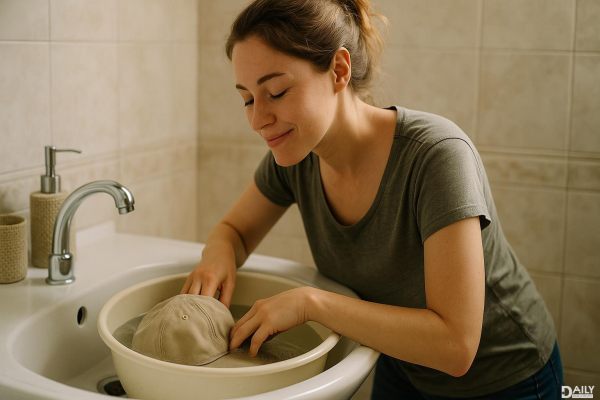Stranded in the wild without matches? No sweat—starting a fire without them is totally doable if you know the tricks of the trade. Whether you’re a seasoned outdoorsy type or a newbie who’s just trying to survive, mastering this skill can be a game-changer. From using friction to harnessing the power of the sun, there are plenty of ways to get that flame going. Let’s dive into the nitty-gritty of how to start a fire like a pro, even when you’re fresh out of matches.

When it comes to starting a fire without matches, the friction method is the OG technique. It’s all about creating heat through rubbing two pieces of wood together. The most common approach is the bow drill method. Here’s how it works: you’ll need a bow (a curved stick with a string), a spindle (a straight stick), a fireboard (a flat piece of wood), and a handhold (a small piece of wood or stone to apply pressure). Place the spindle on the fireboard, loop the bowstring around the spindle, and start sawing back and forth. The friction generates heat, which creates an ember. Once you’ve got that ember, transfer it to a tinder bundle (dry grass, leaves, or bark) and blow gently to ignite the flame. It’s a bit of a workout, but hey, warmth is worth it.
If you’re lucky enough to have a magnifying glass (or even a pair of glasses or a water bottle), you can use the sun’s rays to start a fire. This method is all about focusing sunlight into a concentrated beam to create heat. Hold the magnifying glass at an angle so that the sunlight passes through it and forms a small, intense spot on your tinder. Keep it steady until the tinder starts to smoke, then gently blow on it to encourage the flame. This technique works best on sunny days, so if you’re stuck in the wild during a heatwave, you’re golden. Just remember, patience is key—this isn’t an instant process.
If you’ve got a piece of flint and a steel striker, you’re in business. This method has been used for centuries and is still a reliable way to start a fire. Hold the flint in one hand and the steel striker in the other. Strike the steel against the flint at an angle to create sparks. Direct those sparks onto your tinder bundle, and with a little persistence, you’ll get a flame. It’s a bit like playing a high-stakes game of “spark the fire,” but once you get the hang of it, it’s surprisingly effective. Plus, it’s way cooler than using matches.
If you’ve got a battery (like a 9-volt) and some steel wool, you’re in luck. This method is quick and easy, making it a favorite for modern survivalists. Simply rub the steel wool against the battery terminals to create sparks. The steel wool will ignite, and you can transfer that flame to your tinder. It’s like a mini science experiment that actually pays off. Just be careful not to burn yourself—steel wool gets hot fast.
Yes, you read that right—you can use ice to start a fire. If you’re in a snowy environment, this method can be a lifesaver. Carve a piece of clear ice into a lens shape, similar to a magnifying glass. Smooth it out as much as possible to ensure it can focus sunlight. Hold the ice lens over your tinder and angle it to concentrate the sun’s rays. With a little patience, the heat will ignite the tinder. It’s a bit of a MacGyver move, but it’s proof that you can start a fire with just about anything if you’re creative enough.
If you’ve got some everyday items like potassium permanganate and glycerin, you can create a chemical reaction that starts a fire. Mix a small amount of potassium permanganate with glycerin, and the combination will ignite. It’s a bit like a science experiment gone wild, but it’s a reliable way to get a flame in a pinch. Just be cautious—chemical reactions can be unpredictable, so handle with care.
No matter which method you choose, having the right tinder is crucial. Tinder is the material that catches the spark and turns it into a flame. Look for dry, flammable materials like dry grass, leaves, bark, or even cotton balls soaked in petroleum jelly. The drier and finer the material, the better it will catch fire. Once you’ve got your tinder ready, arrange it in a loose bundle to allow airflow, which helps the flame grow. Think of it as building a cozy nest for your fire to thrive in.
Once you’ve got that initial flame, it’s time to build your fire. Start by adding small sticks or twigs (kindling) to the flame. Gradually increase the size of the wood as the fire grows. A teepee structure works well—arrange the wood in a cone shape around the flame to allow airflow. As the fire burns, add larger pieces of wood to keep it going. Remember, a well-built fire is all about balance—too much wood too soon can smother the flame, while too little can let it die out.
Starting a fire in the wild is a great skill, but it comes with responsibility. Always choose a safe location for your fire, away from dry grass, leaves, or overhanging branches. Clear a space down to bare soil and surround the fire with rocks to contain it. Never leave your fire unattended, and make sure it’s completely extinguished before you leave. Pour water over the embers and stir the ashes to ensure there’s no remaining heat. A little caution goes a long way in preventing wildfires.
So there you have it—starting a fire without matches is totally possible with a bit of know-how and creativity. Whether you’re using friction, the sun, or even ice, these methods can help you stay warm, cook food, and signal for help if needed. Just remember to stay safe, be patient, and keep practicing. After all, the more you know, the more prepared you’ll be for whatever the wild throws your way.
























